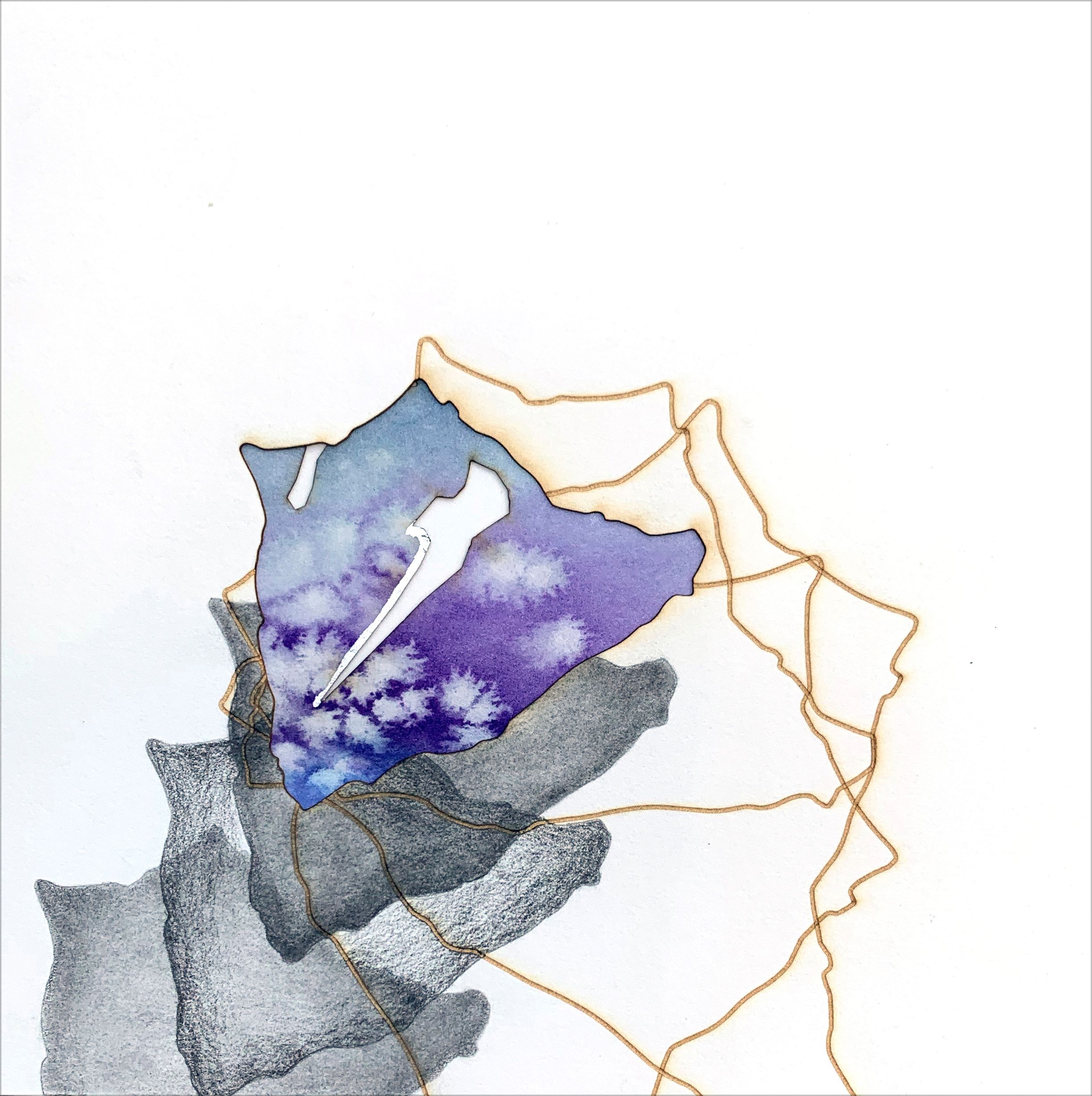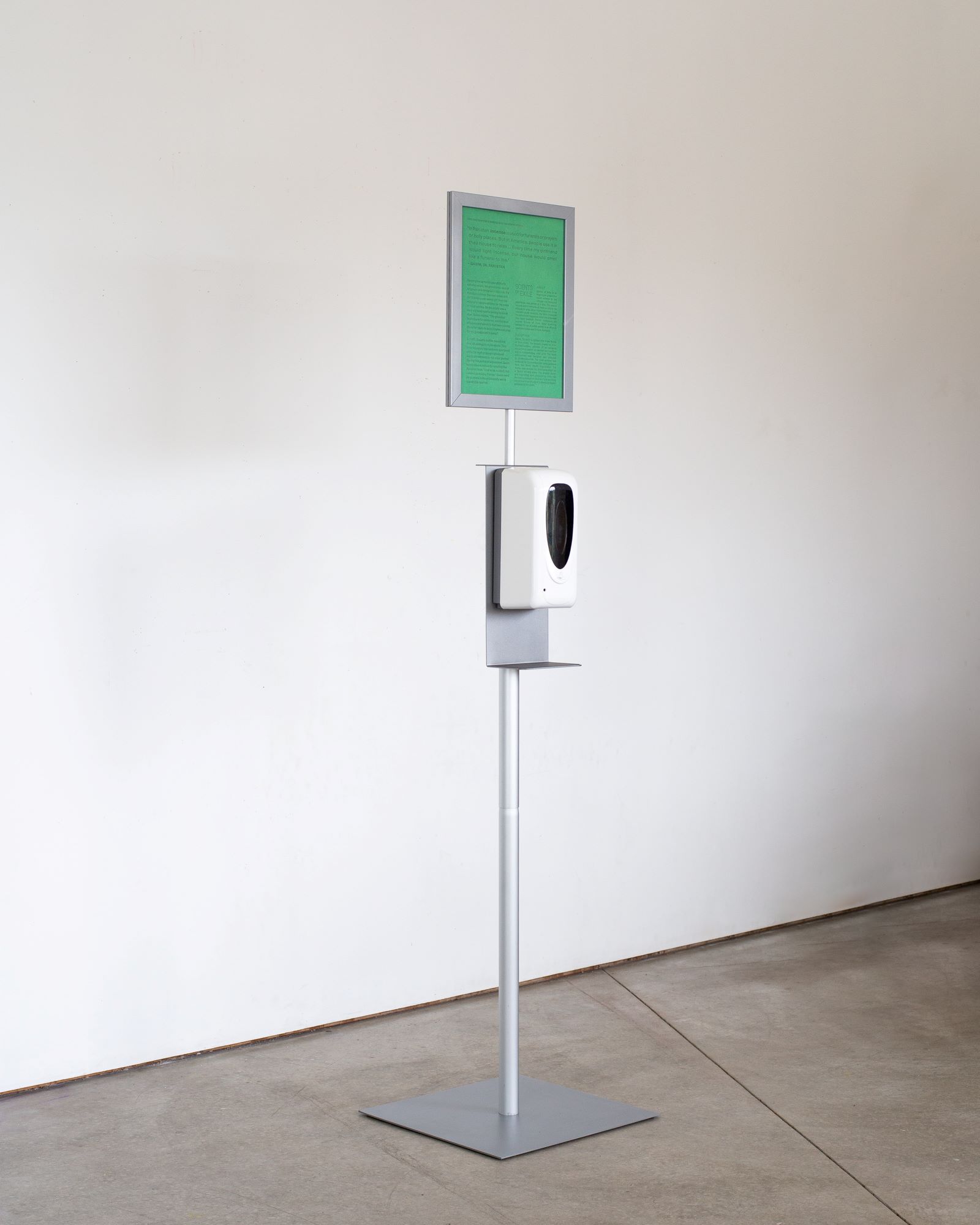GATEWAYS TO AWARENESS
Gateways to Awareness explores the role of memory, perception and the five senses in our appreciation of art and the world around us. The artworks included in the exhibition engage the viewer in multi-sensory experiences across a variety of genres and media including disability, floral, olfactory, and sound art(s). This year-end show is a veritable tasting menu of the experimental and experiential forms of art the Museum is scheduled to present over the next two years.
M Dougherty
M Dougherty
Odor Organ, 2023
Airpump, tabletop device, odor materials
20" x 20" x 36"
Lindsey Dunnagan

Lindsey Dunnagan
Land Enveloped, 2022-2023
Hand dyed cotton & silk organza

Lindsey Dunnagan
Echo, 2020
Watercolor, graphite, and silver leaf on paper
10" x 14"

Lindsey Dunnagan
Sun Shimmer, 2020
Watercolor and silver leaf on paper
10" x 14"

Lindsey Dunnagan
Gliding Mountains, 2020
Watercolor, graphite, and silver leaf on paper
10" x 14"

Lindsey Dunnagan
Bubbling Up, 2021
Watercolor, graphite, and silver leaf on paper
5" x 5"

Lindsey Dunnagan
Catch Me, 2021
Watercolor, graphite, and silver leaf on paper
5" x 5"

Lindsey Dunnagan
Near Misses, 2021
Watercolor, graphite, and silver
Two at 5" x 5"
Brian Goeltzenleuchter

Brian Goeltzenleuchter
Scents of Exile, PAULA, 41, 2021
Freestanding hand sanitizing dispenser, an unsigned, unnumbered edition of scented hand sanitizer, and a corresponding relief print

Brian Goeltzenleuchter
Scents of Exile, MARIA, 43, 2021
Freestanding hand sanitizing dispenser, an unsigned, unnumbered edition of scented hand sanitizer, and a corresponding relief print

Brian Goeltzenleuchter
Scents of Exile, QASIM, 36, 2021
Freestanding hand sanitizing dispenser, an unsigned, unnumbered edition of scented hand sanitizer, and a corresponding relief print

Brian Goeltzenleuchter
Scents of Exile, PEDRAM, 48, 2021
Freestanding hand sanitizing dispenser, an unsigned, unnumbered edition of scented hand sanitizer, and a corresponding relief print

Brian Goeltzenleuchter
Scents of Exile, ABENA, N/A, 2019
Freestanding hand sanitizing dispenser, an unsigned, unnumbered edition of scented hand sanitizer, and a corresponding relief print
Derek Hoffend

Derek Hoffend
Sonotron, 2013
Steel, Sound, Speakers, Wood, Fabric, RGB LED Spotlights, Computer, Software and Amplification Gear
11’ x 9’ x 10’

Derek Hoffend
Portal, 2014
Polyester Drafting Film, RGB LED Strips, Sound, Speakers, Microcontrollers, Audio Equipment
7’ x 9’ x 4 ½’
Molly Joyce

Molly Joyce
Perspective, 2020-present
Video/audio
18'
Marissa Chappell Massucco

Marissa Chappell Massucco
The Living Chair, 2023
Wooden chair, moss, various succulents
45" x 22" x 25"
Bella Meyer

Bella Meyer
Memories, 2023
Sketch of installation
Rachel Rosenkrantz

Rachel Rosenkrantz
309Hz, 2020
Honeycombs, cedar, spruce, bubinga, rosewood, mahogany, Nomex paper, bee's wax finish, and propolis

